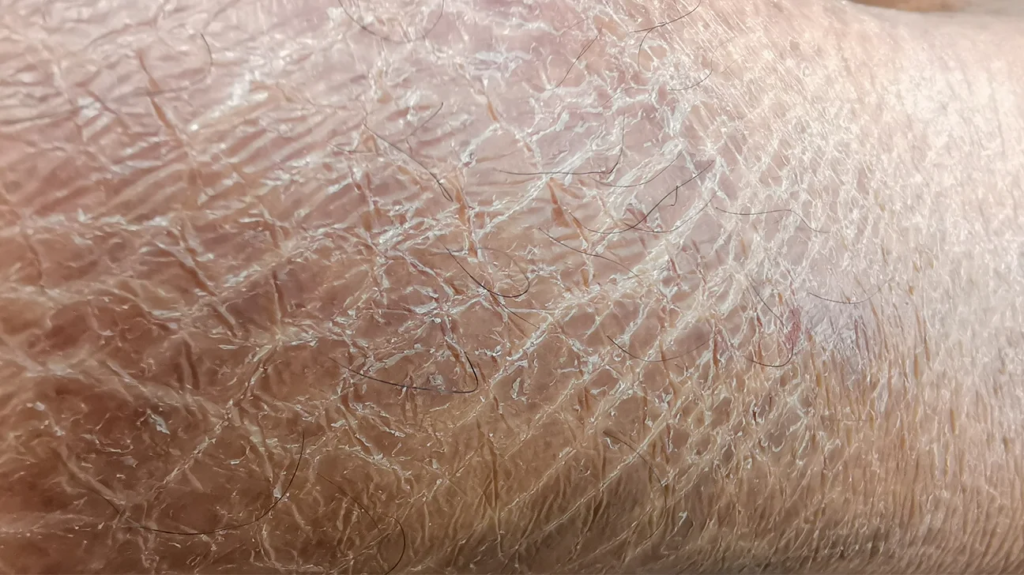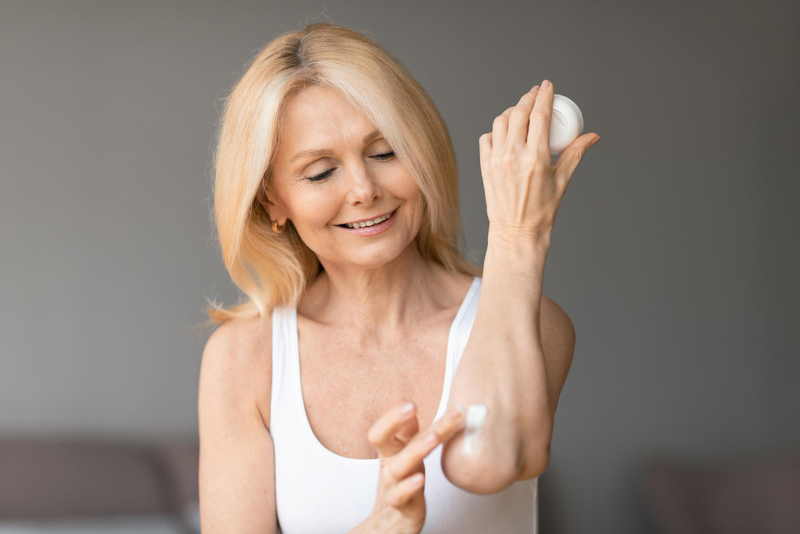In this comprehensive guide, we delve into the world of Asteatotic Eczema, a skin condition primarily affecting older adults. This article explores its causes, symptoms, and treatment options, with a focus on management strategies for Canadians. We’ll examine the environmental and lifestyle factors contributing to this condition, and how to address its unique challenges in colder climates. Let’s embark on this journey to understanding Asteatotic Eczema.
What is Asteatotic Eczema?
Asteatotic Eczema, a chronic skin condition, typically manifests as dry, scaly, and itchy skin. While it predominantly affects the lower legs of older adults, it can surface on any part of the body. The distinguishing features of this condition include:
- Dry, cracked skin that resembles a jigsaw puzzle
- Redness and inflammation
- Itching, which may be severe
- Pain from deep cracks that can bleed

These symptoms can be distressing and uncomfortable, impacting the quality of life of those affected. However, with proper management and care, it’s possible to control these symptoms and lead a comfortable life.
Causes of Asteatotic Eczema
The exact cause of Asteatotic Eczema is unknown, but several factors are thought to contribute to its development:
- Aging: Aging causes various changes to our skin. It thins, loses fat, and no longer appears as plump and smooth as it once did. These alterations can cause dryness and diminished suppleness, leaving the skin more vulnerable to disorders such as Asteatotic Eczema.
- Environment: Environmental variables influence the development and progression of Asteatotic Eczema. Dry, chilly weather can deplete the skin’s natural hydration, resulting in dryness and cracking. This is why Asteatotic Eczema frequently worsens in the winter months. Indoor heating systems can also lower humidity in the home, causing the skin to dry out even more.
- Frequent bathing: While bathing can hydrate the skin, frequent bathing, especially in hot water, can strip the skin of its natural oils, leading to dryness and cracking. Using harsh soaps or detergents can also worsen the condition as they can disrupt the skin’s natural pH balance and remove essential oils.
Understanding these causes and implementing appropriate skincare routines can help in managing the condition and preventing flare-ups. It’s also important to consult with a healthcare professional for personalized advice and treatment plans. Remember, every individual is unique, and what works for one person may not work for another. It’s all about finding what works best for you and your skin.
How Do You Treat Asteatotic Eczema?
Treatment for Asteatotic Eczema focuses on relieving symptoms and preventing flare-ups. This can be achieved through:
- Moisturizing: Regular use of emollients can help to keep the skin hydrated. Look for products that are fragrance-free and specifically designed for sensitive skin.
- Topical steroids: These can reduce inflammation and itching. They should be used under the guidance of a healthcare professional.
- Avoiding triggers: This includes avoiding harsh soaps and hot showers. Instead, opt for lukewarm showers and use gentle, fragrance-free cleansers.
In severe cases, a healthcare professional may prescribe stronger treatments such as phototherapy or systemic medications.
Home remedies for Asteatotic Eczema
Here are some home remedies that may help manage Asteatotic Eczema:
- Moisturizing: Regular use of over-the-counter (OTC) products like lotions containing a high oil content can help keep the skin hydrated. Apply a gentle moisturizer throughout your day.
- Oatmeal: Colloidal oatmeal is beneficial for a variety of skin conditions, including Asteatotic Eczema.
- Bathing: Take lukewarm (not hot) showers or baths for no more than 10 or 15 minutes to prevent dry skin. Dry yourself very carefully (pat dry, instead of rubbing hard) and apply moisturizing lotion, cream, oil, or ointment all over your body.
- Emollients: Applying an emollient like Vaseline within 3 minutes of bathing or showering can help lock in moisture.
While these remedies can manage symptoms, it’s important to consult with a dermatologist for a comprehensive treatment plan. Canadians may benefit from consulting online dermatology platforms to access timely care.

Living with Asteatotic Eczema
Living with Asteatotic Eczema can be challenging, but with the right care and management, it’s possible to lead a normal, healthy life. Here are some tips:
- Keep your skin moisturized: Apply a thick moisturizer immediately after bathing to lock in moisture. Reapply throughout the day as needed.
- Use a humidifier: Indoor heating in Canada can dry out the air, so using a humidifier can help maintain skin moisture.
- Seek professional help: If your symptoms persist, consider consulting an online eczema dermatologist. They can provide personalized advice and treatment plans.
Final Thoughts
Asteatotic Eczema is a chronic skin condition influenced by factors such as cold weather, aging, and environmental triggers, particularly in Canada. Effective management involves a combination of traditional treatments like moisturizers and topical steroids, alongside home remedies such as oatmeal baths and proper bathing techniques. Similar to adult acne, it requires medical care, lifestyle adjustments, and preventive measures tailored to individual skin needs. With consistent care and professional guidance, both conditions can be managed effectively, promoting healthier and more comfortable skin.
FAQs
Does diet impact Asteatotic Eczema?
While there is no special diet for Asteatotic Eczema, a nutritious diet can help improve general skin health. Some people have symptoms after eating certain foods, thus keeping a food diary may be beneficial.
Can asteatotic eczema spread to other areas of the body?
While it is most frequent in the lower legs, it can occur elsewhere on the body. It is critical to administer treatment to all affected areas.
Is Asteatotic Eczema contagious?
No, Asteatotic Eczema is not contagious. It cannot be spread from person to person.
Can stress trigger Asteatotic Eczema?
Yes, stress can trigger a flare-up in some people. It’s important to manage stress levels to help control symptoms. This can be achieved through relaxation techniques such as meditation or yoga.
